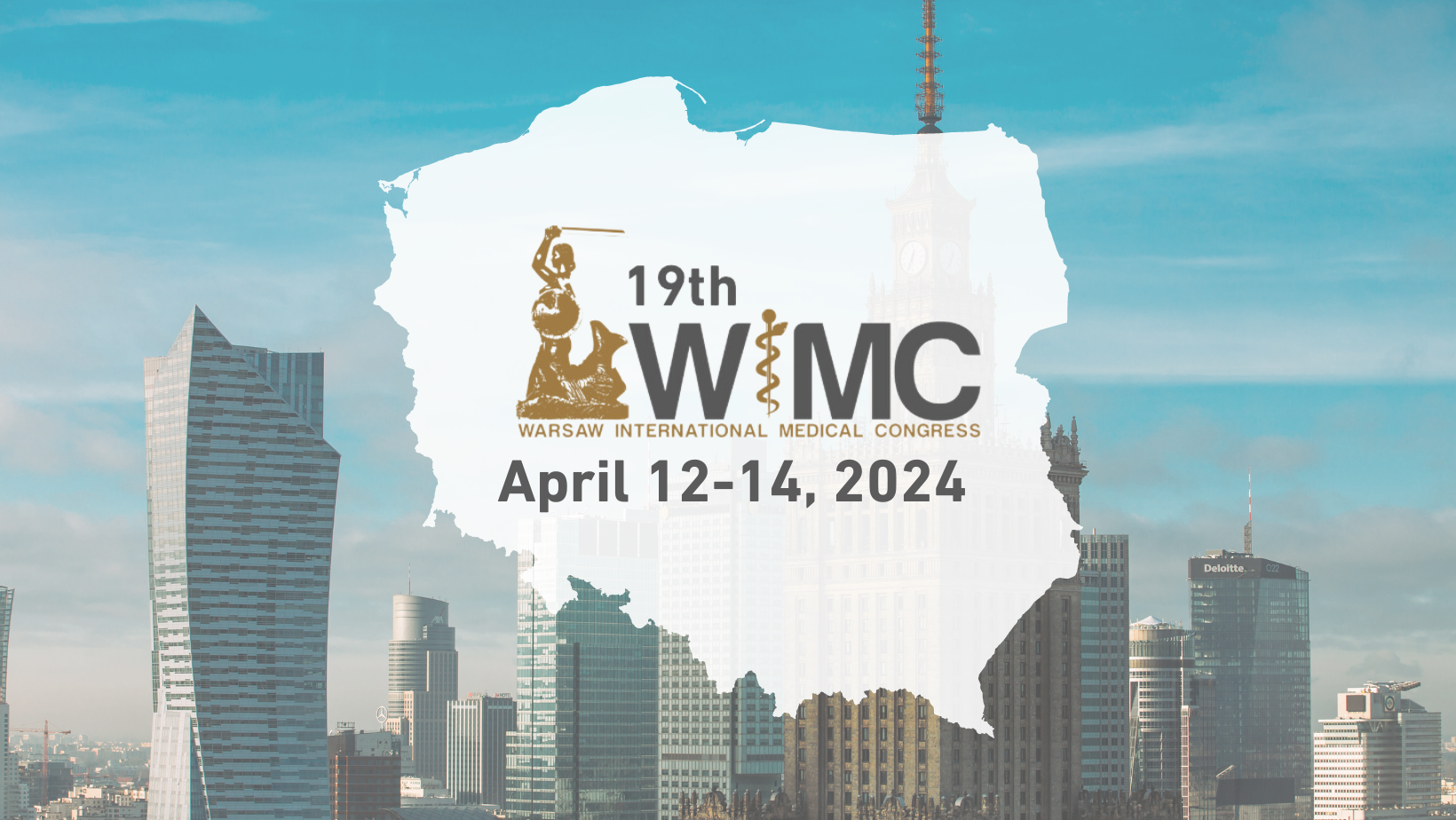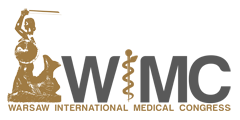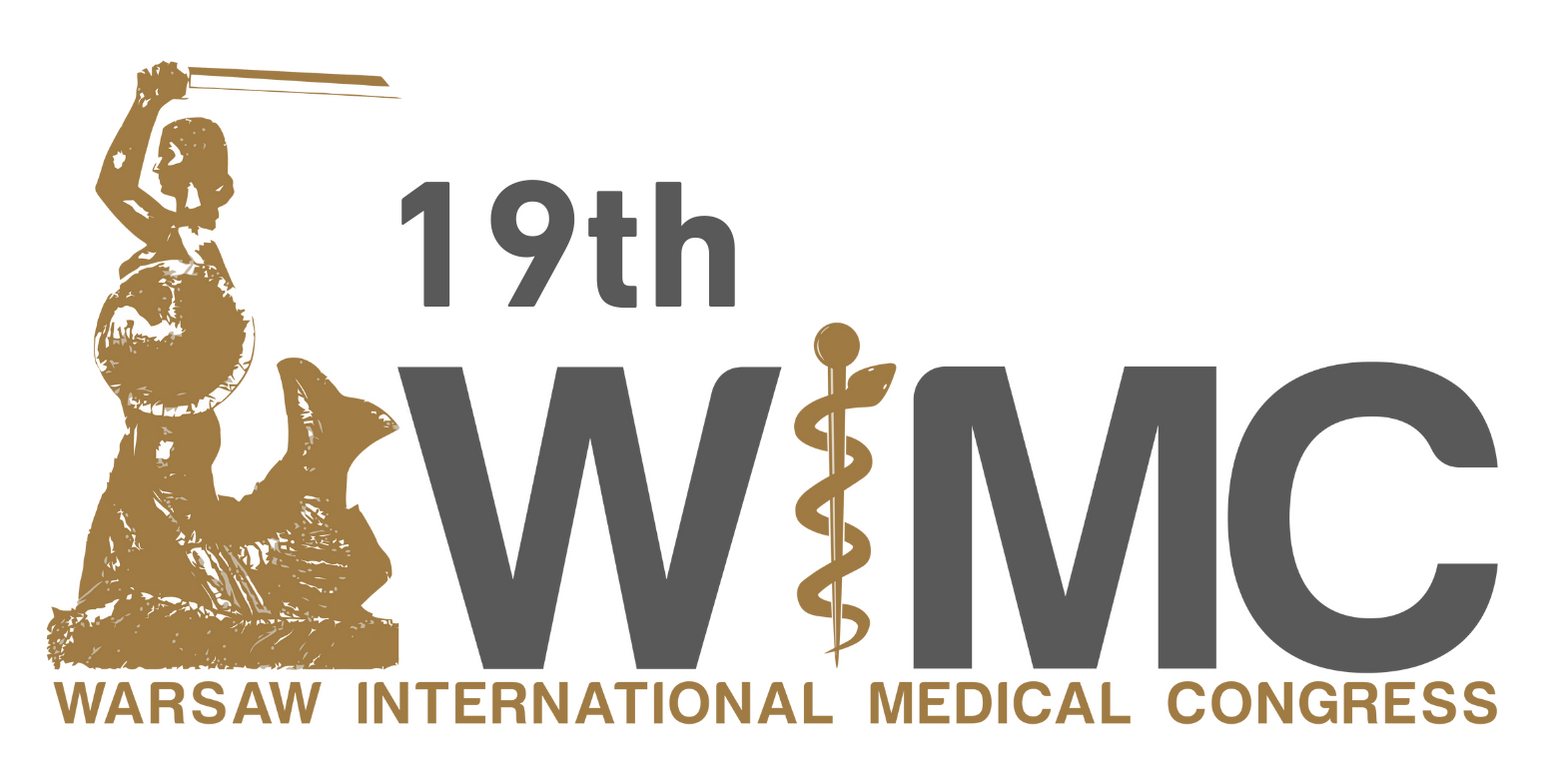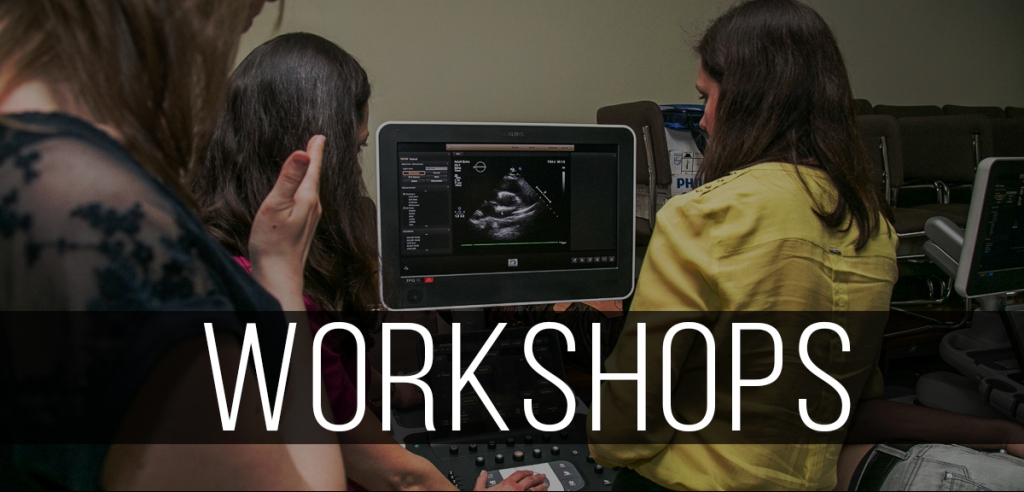Workshops of the 15th Warsaw International Medical Congress:
FRIDAY
Elastography sposored by MIRO
Organiser: MIRO
Form: Practical
Description: Elastography is a medical imaging modality that maps the elastic properties and stiffness of soft tissue. The main idea is that whether the tissue is hard or soft will give diagnostic information about the presence or status of disease. For example, cancerous tumours will often be harder than the surrounding tissue, and diseased livers are stiffer than healthy ones.
The most prominent techniques use ultrasound or magnetic resonance imaging to make both the stiffness map and an anatomical image for comparison.
In 2003, Hitachi Medical released the world’s first commercially available ultrasound platform with Real-time Tissue Elastography. Initial research focused on breast applications and the technique is now widely used for breast cancer diagnosis.
Elastography is available on the majority of Hitachi platforms & with more than 25 different transducers. Numerous publications and communications at scientific meetings have validated its accuracy and reproducibility in clinical areas such as the breast, prostate, thyroid, liver, pancreas, and many more.
Since 2003, many additional features have been added to improve accuracy and reproducibility such as the strain graph, frame averaging, auto frame selection on freeze, strain ratio and strain histogram measurements.
In 2011, Hitachi reinforced its leadership in elastography applications with the launch of the HI VISION Ascendus, the world’s first product able to display 4D RTE (Real-time Tissue Elastography).
In 2016, SWM was released on HI VISION Ascendus and ARIETTA V70, with new features that improves Breast Elastography workflow with RTE. So today, two complementary methods are available in one system, Shear Wave Measurement and Real-time Tissue Elastography.
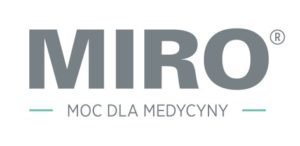

3D printing – from patient to model
Organiser: Students’ Scientific Group ‘Anatomy’
Form: Practical and theoretical.
Description: Three-dimensional imaging has opened up a vast new world. We can plan ahead of time, think about the actual challenge of the particular child’s heart, collaborate with surgeons and have a full-fledged plan. This allows to tackle the most complicated problems with the best outcomes.
Our plan is to show step-by-step how 3d models are created, from patients CT-scan to three-dimensional image. Participants will have opportunity to see how hard it is to process and prepare ‘raw’ 2d scan and make it ready to print in 3d printer using Mimics software provided by Materialise.
In case of any questions, please contact us: arkadiusz.kowalczyk@student.wum.edu.pl
Bone marrow biopsy
Organiser: Student’s Scientific Group ‘Spherocyte’, Department of Pediatrics, Hematology and Oncology
Form: Practical
Description: Bone marrow is a sponge-like tissue, located inside bones. It contains a wide array of immature cells which have the potential to develop into various components of the blood (through a process called hematopoiesis) and of the immune system. Thanks to bone marrow, your body can produce hundreds of billions of new cells, every single day! A bone marrow biopsy is the examination through which we can find out if there is any bone marrow dysfunction, and what characterizes this dysfunction. Bone marrow biopsies are commonly performed in patients with certain cancerous diseases, such as leukemia or multiple myeloma, as well as in other cases.
We cordially invite you to participate in our hands-on bone marrow biopsy simulation! During our workshop, you will first gain theoretical knowledge about the bone marrow biopsy procedure. After that, a practical simulation part will take place. Spherocyte will provide egg and chicken-leg “patients” for practice as well as all other necessary equipment.
We hope to see you there!
In case of any questions, please contact us: j.rogows@gmail.com
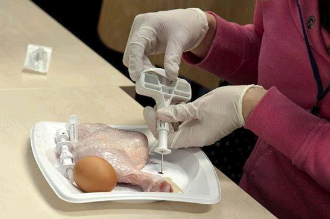
Ankle-brachial index measurement
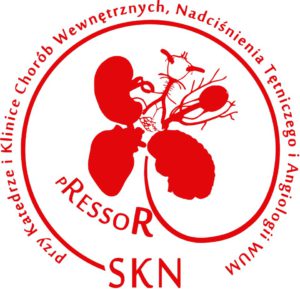 Organiser: Students’ Scientific Group „Pressor”, Department of Internal Medicine, Hypertension and Vascular Diseases
Organiser: Students’ Scientific Group „Pressor”, Department of Internal Medicine, Hypertension and Vascular Diseases
Form: Theoretical and practical
Description: Ankle brachial index (ABI) is simple and reproducible screening test of choice that allows to diagnose and grade the obstruction of peripheral arterial disease (PAD) in the legs. The ABI was introduced into clinical practice by Winsor in 1950. The measurement of the ABI requires the measurement of systolic pressures in the brachial artery at each elbow, in the posterior tibial and the dorsalis pedis arteries at each ankle. The systolic pressures are recorded with a handheld Doppler instrument. Usually a standard blood pressure cuff can be used at the ankle. The result is reported as a ratio of the ankle systolic pressure over the higher brachial pressure. The ABI is calculated for each leg separately, and the lower of the two values is taken as a result for the patient. The ABI value ≤ 0.9 is consistent with diagnosis of PAD. Mild to moderate PAD may be diagnosed when ABI is between 0.4 and 0.9 while ABI less than 0.40 indicate severe PAD. High value of ABI greater than 1.3 is suggestive of non-compressible vessels. Repeated ABI measurements are used to monitor the progresion of PAD and the results of revascularization procedures. The ABI is also used in the prognosing of the limb salvage and wound healing. ABI is a surrogate marker of atherosclerosis and predictor of future cardiovascular related morbidity and mortality.
In case of any questions, please contact us: k.cienszkowska@gmail.com
Head and neck ultrasound
Organiser: SKN Otolaryngologii WUM
Form: Theoretical and practical
Description: The head and neck constitute a broad anatomic region, which encompasses many aerodigestive, salivary gland, lymphatic, endocrine, nervous, and vascular structures. A substantial number of the pathologic conditions affecting these organ systems are accessible to ultrasound imaging.
This course will outline the uses of ultrasound in the head and neck by short theoritical introduction and practical demonstration, participants will then have the opportunity to practice ultrasound on each other.
In case of any questions, please contact us: b.marcinkiewicz@live.com
Culinary Medicine Workshop: your health on your plate
Organiser: MUW Lifestyle Medicine Scientific Club (SKN Medycyny Stylu Życia WUM)
Form: Practical
 Have you ever heard of lifestyle medicine or its branch: culinary medicine?
Have you ever heard of lifestyle medicine or its branch: culinary medicine?
No?
You have an exceptional opportunity to find out for your own what hides behind those fancy-sounding names.
Yes?
Come and practice your skills spending time cooking, talking and eating during our plant-based cooking class in a professional culinary studio : )
What?
With our initiative we would like to equip future doctors and other health professionals with the skills to deliver meaningful nutrition advice to their patients. Our goal is also to encourage students to take care of their own health starting with their plates.
During our workshop we’ll teach you how to prepare easy, delicious and fast meals on a student budget. Our main focus will be everyday plant-based menu. We will show you some simple tricks to help you better organize your pantry and fridge proving that even while being a medical student you can find time to cook and eat healthy on a daily basis.
Why?
WHO estimates that as much as 2/3 of all the diseases are caused by faulty lifestyle: tobacco use, poor diet and lack of physical activity – in other words: „bad use of feet, forks and fingers”.
Around 60% of Polish population has dyslipidemia, 50% is obese. Lifestyle medicine comes to rescue addressing the underlying causes of that situation.
Despite the increasing prevalence of nutrition-related diseases, nutrition education still remains underemphasised in medical school curricula across the world. During our studies we learn that we should recommend “lifestyle modifications” to our patients but would you be able to tell where do the trans fats hide, where to look for omega-3, which oils should we use daily and which to avoid? Could you advise on how to cut down sugar and provide more fiber?
Hope to see you soon at the table!
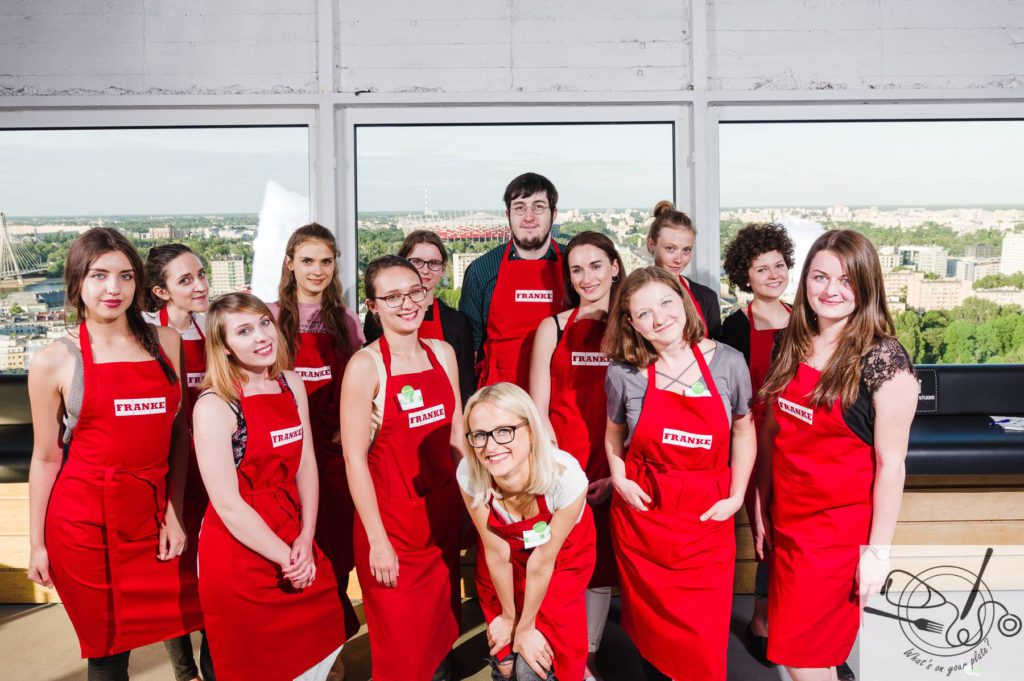
Last year edition in pictures: http://bit.do/eaYnK
In case of any questions, please contact us: alicebaska@gmail.com
What eating for two really means? Nutrition in pregnancy and lactation.
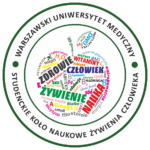
Organiser: MUW Human Nutrition Students’ Scientific Club
Form: Practical and theoretical
Description: Nutritional recommendations are unique to the pregnancy and lactation period. Maternal nutrition during pregnancy influences both her health and the growth of the fetus. Breast milk properties can also be affected by maternal diet. Unbalanced and inadequate diet, undernutrition as well as overnutrition, may cause dangerous complications and increase the risk for chronic diseases. It is vital to popularize knowledge on the importance of healthy lifestyle and proper dietary habits during pregnancy and breastfeeding and debunk potentially harmful myths.
We will mention issues such as:
– How energy, macro- and micronutrient needs change?
– Are there any forbidden foods?
– Are supplements necessary?
– Is there any dietary management of pregnancy complications?
– Myths and stereotypes about diet in pregnancy and lactation
– The clinical case discussion
In case of any questions, please contact us: ola.malach@gmail.com
Basic concepts in emergency every doctor should know
Organizer: English division ANKONA – Anesthesiology and emergency medicine Scientific Circle, Anesthesiology department
Description: since emergency doctors face many critical situations, we decided as an emergency medicine scientific circle to revise few basic concepts that every emergency doctor should be familiar with.
The workshop will be focusing on six main things: Basic life support (BLS), Advanced life support (ALS), Glascow coma scales (GCS) for trauma patients, Venflons (Cannula) to provide arterial access and finally Focused assessment with sonography in trauma (FAST).
The participants will have an opportunity to apply their knowledge on mannequins.
See you there!
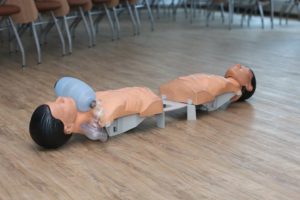
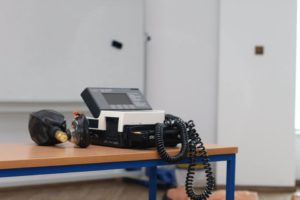
Pituitary tumors
Organiser: Students’ Scientific Group “Endocrinus”, Department of Internal Medicine and Endocrinology, Medical University of Warsaw
Form: Theoretical
Description: This year we are pleased to invite you to workshop concerning pituitary tumors. During our classes we will present you not only diagnostic process of pituitary tumors, but also main conditions, that are regarded with this state, such as:
-menstrual disorders,
-blurred vision,
-headache.
Moreover, you will have the possibility to broaden your knowledge.
Laparoscopic and surgical stitching workshop in cooperation with Ethicon by Johnson & Johnson
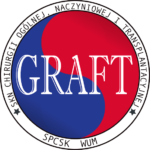 Organiser: Student Scientific Circle “GRAFT” at the Department of General, Vascular and Transplant Surgery at the Medical University of Warsaw
Organiser: Student Scientific Circle “GRAFT” at the Department of General, Vascular and Transplant Surgery at the Medical University of Warsaw
Form: Theoretical and practical workshops
Description: Together with ETHICON, we have prepared this laparoscopic and surgical stitching workshop for you.
Laparoscopic surgery is known as minimally invasive surgery. It is a modern surgical technique in which operations are performed through small incisions. Well known advantages are less postoperative pain, shorter time of hospitalization and recovery. These are the main reasons why laparoscopic surgery is becoming so popular.
At our workshops students will be able to use training simulators and become acquainted with laparoscopic surgery basics.
In case of any questions, please contact us:
skng.graft.4p@gmail.com
![]()
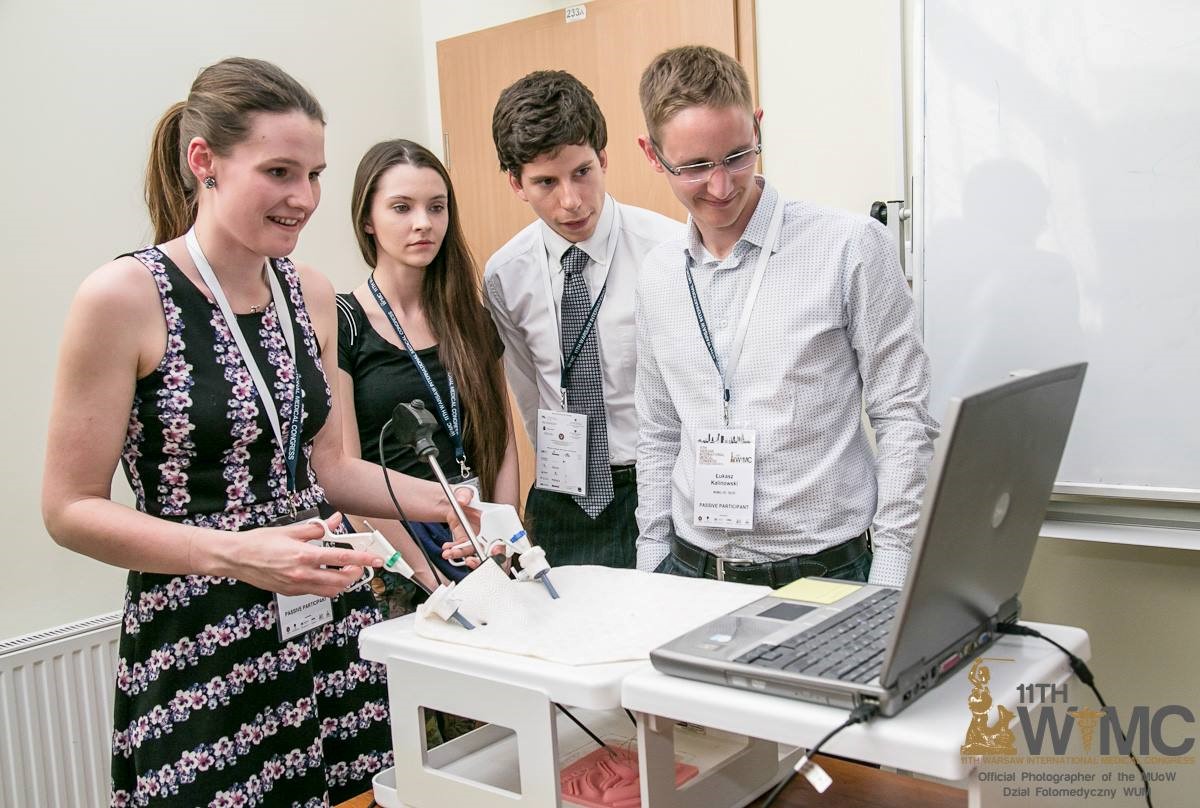
Movement Analysis in Rehabilitation, Sports and Research
Organiser: Students’ Scientific Group of Physiotherapy, Department of Rehabilitation
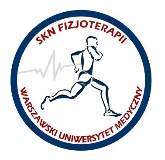
Description: This workshop is practical, and participants will learn the basic principles of movement analysis, using VICON – Hi Tech Multimedia System.
VICON is a global leader in this field. It consist of cameras and special software, wich allows to collect and analize movement data in healthy people, patients as well as in athletes. This enables objective evaluation of the functional status of the subjects. The system is used in didactics, scientific research, physiotherapy and sport.
In case of any questions, please contact us:

Neurological examination
Organiser: Students’ Scientific Group by the Department Clinic of Pediatric Neurology in cooperation with Students’ Scientific Group by the Department of Neurology, Medical University of Warsaw
Form: Theoretical and practical
Description: Neurological disorders are significant part of civilization’s morbidity. It is estimated that mortality from neurological diseases will permanently rise. Damage of the nervous system has a big impact on patient’s physical function, mental health and overall quality of life. Therefore, it is essential for physicians to know and understand basics of neurological examination. Conscious referral for further neurological diagnosis may be critical for patient’s health.
In our workshop we will guide you, step by step, through basics of neurological examination:
1)Cranial nerves examination
2)Sensory and motor examination
3)Reflex testing
4)Coordination evaluation
5)Gait and station quality evaluation
In case of any questions, please contact us: zofia.oborska@gmail.com
Ultrasound in Neurology
Organiser: Students’ Scientific Group by the Department of Neurology, Medical University of Warsaw
Form: theoretical and practical
Description: Doppler ultrasound of carotid arteries is performed to test for the presence of atherosclerotic plaques, which are made up mainly of cholestrol and calcium. The ultrasound not only shows calcified, mixed or noncalcified plaques but also enables you to:
- Evaluate blood flow through the artery before and after surgery to remove plaques (carotid endarterectomy)
- Evaluate the placement and effectiveness of a stent, a mesh tube used to improve blood flow through an artery
- Locate a collection of clotted blood) that may prevent blood flow
- Detect other carotid artery abnormalities that may disrupt blood flow
The ultrasound can also show how the blood flow in different regions of the brain changes depending on the patient’s movement.
During our workshops a theoretical introduction will be provided by an experienced neurologist. Next, the first group of participants will be able to perform ultrasound of carotid arteries whereas the second group will examine intracranial blood flow on their own.
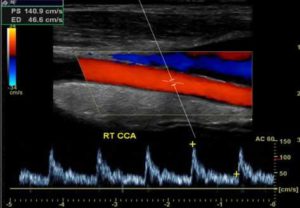
In case of any questions, please contact us: skn.neurologii.banacha@gmail.com
Basic ophthalmologic skills
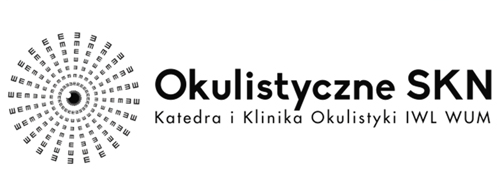 Organiser: Students’ Ophthalmology Association of Warsaw Medical University
Organiser: Students’ Ophthalmology Association of Warsaw Medical University
Description: The examination of the structure of human eye is an important part of general physical examination, often overlooked by non-ophthalmologists. During our workshop we would like to present you basic skills which can be helpful to doctors of all specialties in everyday routine as well as in the case of emergency. The topics that we’ll focus on are:
- examination of an anterior segment of the eye (slit lamp)
- examination of a posterior segment of the eye (ophthalmoscope)
- examination of a visual acuity and central vision efficiency (Snellen’s and Amsler’s charts)
- colored vision (Ishihara Color Test)
- technique of reversing upper and lower eyelid
- technique of instilling eye drops
In case of any questions, please contact us: okulistyczne.skn@gmail.com
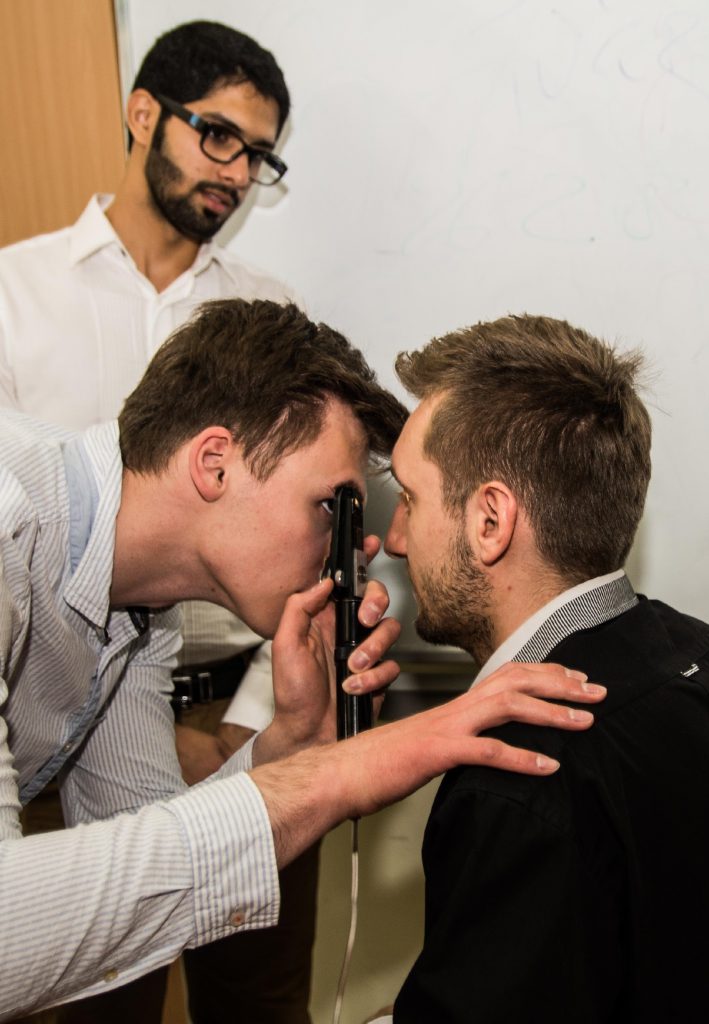
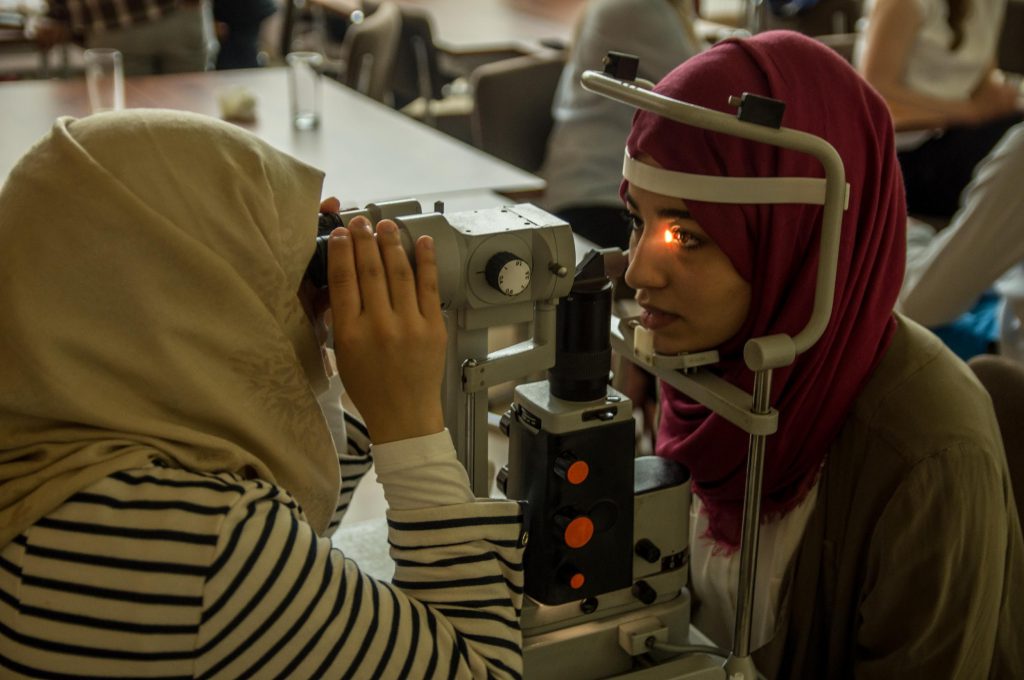
Surgical stitching workshop in cooperation with SKINPAD.pro
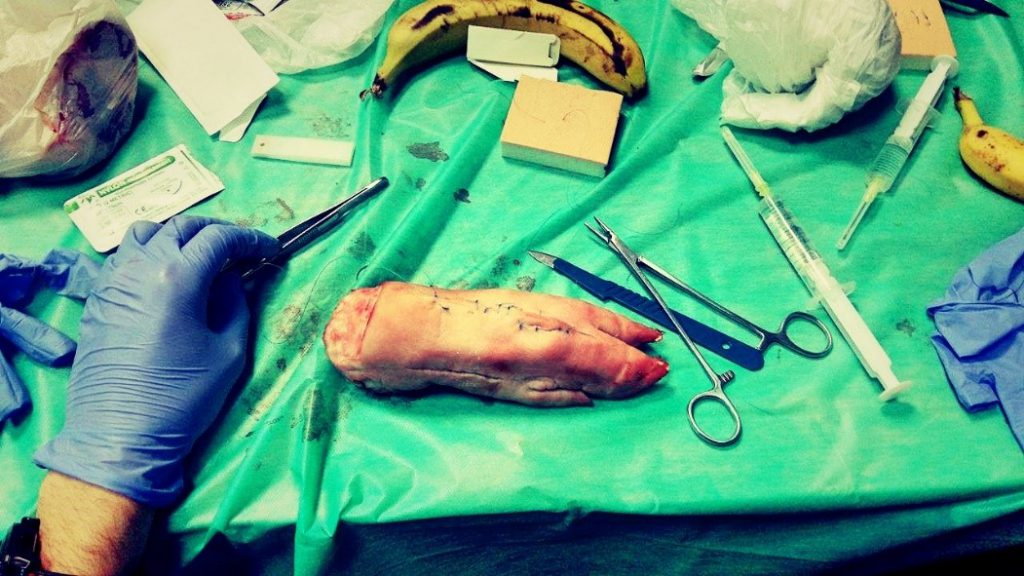
Organiser: Student Scientific Circle “GRAFT” at the Department of General, Vascular and Transplant Surgery at the Medical University of Warsaw
Form: Theoretical and practical workshops
Description: Together with SKINPAD.pro we have prepared this surgical stitching workshop on an artificial material imitating human skin. The purpose of this workshop is to give students an introductory look into basic surgical suturing practices. It will comprise of brief seminars followed by a practical training session. The suturing techniques that we are going to teach you are:
1. Continuous sutures
2. Interrupted sutures
3. Buried sutures
4. Subcutaneous sutures
In case of any questions, please contact us: skng.graft.4p@gmail.com
Clinical nutrition as a way of treatment support

Organiser: MUW Clinical Nutrition Students’ Scientific Club
Form: Practical and theortical
Description: Malnutrition is one of the biggest problems of hospitalised patients. About a third of them is already malnourished coming to the hospital, while being there things only get worse. It is estimated that 50% of patients leaving the hospital show symptoms of malnutrition. There are a few factors determining this problem, one of them being lack of knowledge of the medical staff. The worshop is to present the types and symptoms of malnutrition, methods of clinical nutritional intervention (e.g. enteral and parenteral nutrition) with emphasis on patients that are in a group of high risk of malnutrition. It will also include the presentation of different tubes and pomps (e.g. nasogastric tube, PEG, PEJ) used to feed the patients as well as possibility of tasting the commercial diets used in the clinical nutritional intervention.
Workshop agenda:
1. Theoretical presentation including the definition and types of malnutrition, types of clinical nutrition intervention, groups of patients of high risk of malnutrition and clinical cases
2. Presentation of the equipment (PEGs, tubes, pomps, bags and syringes used in clinical nutrition)
3. Presentation and practice of the simple procedures (nasogastric tube insertion, basic care for PEG and PEJ)
4. Commercial clinical diets tasting
In case of any questions, please contact us: skn.zywienie@gmail.com
How RNA sequencing analysis leads to progress in molecular oncology?
Organiser: SKN przy Klinice Neurochirurgii CSK MSWiA w Warszawie
Form: Practical
Description: If you are wandering what Next Generation Sequencing (NGS) means and how it can influence research and clinical oncology you should join us! We will learn some basics of R programming language and go straight to analysing some NGS data.
Next Generation Sequencing has revolutionized personalized medicine, bringing breakthroughs in understanding of neoplasm biology. The results are changing treatment and diagnostics of numerous diseases, including glioma, breast and lung cancers. Join us and learn about differences between NGS and other RNA quantification methods and how those differences influence building statistical models. We will also discuss how modifications in data processing can yield new exciting research opportunities.
By the end of this workshop, you could be able to identify differentially expressed genes, describe them in biological terms (e.g. as groups that are targeted by certain drugs) and visualize your data, as shown below:

In case of any questions, please contact us: szymonbaluszek@gmail.com
Interactive electrocardiography workshops
Organiser: Students’ Scientific Group, 1st Department of Cardiology, Medical University of Warsaw
Form: Theoretical and practical
Description: We are going to present to all participant ECG of basic arrhythmias. After every presentation students will vote using their smartphones on ECG recognition. After that we will go through results of our voting, however the results will be shown as percentage of votes on every answer. Every vote will be anonymous. This part will be followed by electrophysiological explanation and together we will conclude what kind of arrhythmia has been displayed. Moreover, we will emphasise the most important criteria of presented arrhythmias . This form of workshops ensures active participation and is great way of getting knew knowledge without fear of marking wrong answer. Participants should know basic ECG rules and bring smartphone (iOS or Android) with connection to mobile internet.
Basic Echocardiography Course
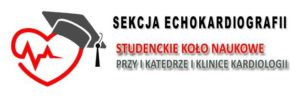
Organiser: Students’ Scientific Group, 1st Department of Cardiology, Medical University of Warsaw
Form: Theoretical and practical
Description: Echocardiography plays a key role in the diagnosis of cardiovascular diseases. It has become one of the most accessible tools in cardiologists’ daily practice.
Echocardiographic workshops are an excellent opportunity to familiarize with the basic imaging technique used in cardiology to assess the structure and function of the heart.
In the first part of the workshops, we will present a brief review of theoretical principles of the examination and assessment of the heart function.
In the second part, participants will be able to put the theory into practice and improve their practical skills with the help from experienced echocardiographists from 1st Department of Cardiology.
In case of any questions, please contact us: aleksandra.bodys1@gmail.com
Laboratory Management of Diabetes
Organiser: Student’s Scientific Group of Laboratory Medicine
Form: Practical
Description: Diabetes mellitus (DM) is a group of metabolic diseases characterized by hyperglycemia due to defective secretion and/or action of insulin. Chronic hyperglycemia is associated with damage, dysfunction, and failure of various organs, in particular eyes, kidneys, nerves, heart, and blood vessels. Diabetes is known as a Disease of Civilization.
It is essential to periodically check the level of fasting blood glucose at least once a year. The test is simple, not invasive and generally available. For particular diagnosis of diabetes Oral Glucose Tolerance Test is used in a group of patients with increased risk for DM development.
During this workshop you will have unique chance to perform OGTT (Oral Glucose Tolerance Test) and to interpret laboratory test results of patients with DM and metabolic syndrome.
This workshop will consist of:
1. Blood collection on fasting
2. Preparation of glucose solution for OGTT
3. OGTT (measurment after two hours)
4. Interpretation of patients’ laboratory tests results
In case of any questions please contact us: byk.kinga@gmail.com
Lax Vox – one of the efficient methods of vocal practicing
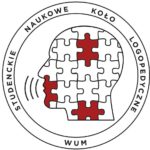 Organiser: Student’s Scientific Association of Speech Therapy, (Studenckie Naukowe Koło Logopedyczne WUM), Medical University of Warsaw
Organiser: Student’s Scientific Association of Speech Therapy, (Studenckie Naukowe Koło Logopedyczne WUM), Medical University of Warsaw
Form: Theoretical and practical
Description: Lax Vox is one of the main course in speech therapy. During this workshop we will focus on:
- explanation what the Lax Vox method is,
- telling in which cases you could use this method,
- telling for which patients this method is recommended,
- presentation how to train with patients correctly,
- answering your questions.
The main aim of this workshop is to explain how to use Lax Vox method and learn how to practice correctly. You will also have an opportunity to try this on your own with workshop leaders support.
During the workshop you will receive a booklet with instruction how to use Lax Vox method.
In case of any question, please contact us: dgebska@gmail.com
SUNDAY
Laryngological examination and olfactory test
Organiser: Student scientific group of Otolaryngology at the Otolaryngology Department of Dentistry Division
Form: Practical and theoretical
Description: During our workshops we would like to teach you otorhinolaryngological examination using laryngological tools. Detailed assessment of the upper airways which include oral cavity, pharyngx and laryngx will be performed. We want to simplify and clarify the subject as it could be valuable for paediatricians, general practitioners or even surgeons on their duties at emergency rooms.
Furthermore, we offer you the opportunity of taking part in basic course of the olfactory testing. This overlooked sense while taking medical examinations could highly affect patients’ quality of life. During our workshops we will be explaining complexity of scent perceptions and it huge role in flavour determinations.
Probably it will be the last and only chance to check how turpentine exactly smells.

In case of any questions, please contact us: krsobczyk@gmail.com
Abdominal Ultrasound Examination
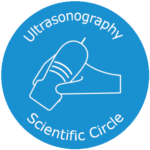
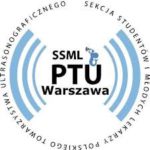
Organisers: Ultrasonography Scientific Circle, Students’ and Young Doctors’ Section of Polish Ultrasound Society
Form: Practical
Description: Nowadays, the ability to perform a basic ultrasound of the abdomen is almost obligatory for a professional physician. An ultrasound machine with convex and linear transducers allows you to evaluate internal organs and vessels in search of tumors, inflammatory processes, aneurysms and various other pathologies or rapidly assess patient’s condition after trauma. Not only radiologists, but many other specialists use ultrasound on a daily basis.
During our workshop, you will gain knowledge how to handle the ultrasound machine and transducers. We will teach you to visualize the internal organs of the abdomen, including liver, spleen, kidneys, pancreas, blood vessels etc. We hope that after our workshop you will appreciate the huge potential of ultrasound examination and use it in your future clinical practice.

In case of any questions, please contact us: jagus.dominika@gmail.com, wojtek.lyczek@gmail.com
Advanced Life Support
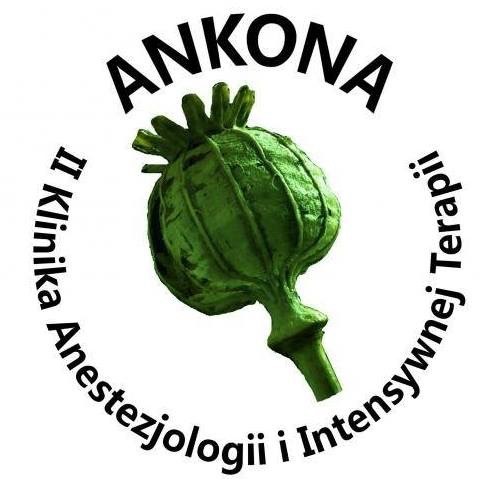 Organiser: Student’s Anaesthesiology and Intensive Care Association of Warsaw Medical University
Organiser: Student’s Anaesthesiology and Intensive Care Association of Warsaw Medical University
Form: Theoretical and practical
Description: During our workshop we would like to demonstrate and practice Advanced Life Support(ALS) methods such as:
- Airway management: oropharyngeal airway, face mask, laryngeal mask, endotracheal intubation
- Heart rhythm recognition
- CPR and defibrillation
- Pediatric Advanced Life Support


In case of any questions, please contact us: aleksandra.karewicz@gmail.com
Basic dermoscopy skills
Organiser: Students’ Scientific Group by the Department and Clinic of Dermatology
Form: Practical
Description: Dermoscopy (also called dermatoscopy), is an essential tool for dermatologists, plastic surgeons, general practitioners and other health professionals attempting early diagnosis of melanoma. It has been shown to be relatively simple and fairly inexpensive tool in everyday practise. Using dermoscopy to evaluate pigmented lesions, the abnormal structural features of melanoma can be identified, borderline lesions may be closely observed and benign lesions can be confidently diagnosed without the need for biopsy. Dermoscopy is also increasingly useful in diagnosis of non-pigmented skin lesions and inflammatory dermatoses. During our workshop participants will be provided with basic skills and knowledge including epidemiology of skin cancer, dermoscopy criteria pattern analysis and diagnostic algorithms.
In case of any questions, please contact us: kasiapisarz@gmail.com
Cardiologic intensive care & ALS workshop
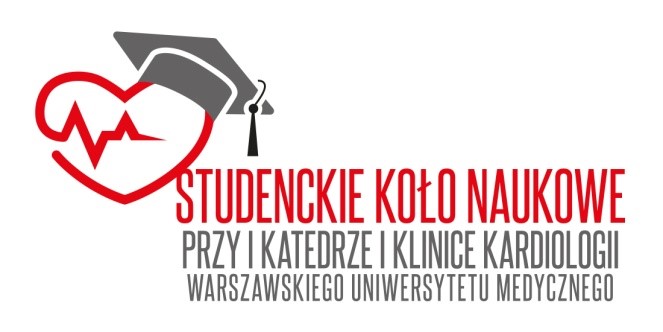
Organiser: Students’ Scientific Group, 1st Department of Cardiology, Medical University of Warsaw
Form: Theoretical and practical
Description: Participant will play the role of Emergency Department doctor, who must deal with acute and potentiallly fatal cardiologic conditions which may degenerate into cardiac arrest.
Participants will train ALS protocols on a phantom while simultaneously training their ability to diagnose and treat reversible causes of cardiac arrest.
Participants are required to study ERC Guidelines for Resuscitation before the workshop (it will be provided to all registered participants by email).
In case of any questions, please contact us: dammalecki@gmail.com;
eFAST – practical ultrasonography course

Organiser: Ankona A
Form: Practical
Description: The Focused Assessment with Sonography in Trauma (FAST) is an ultrasound protocol developed to assess for hemoperitoneum and hemopericardium. Numerous studies have demonstrated sensitivities between 85% to 96% and specificities exceeding 98%. In the subset of hypotensive trauma patients, the sensitivity of the FAST exam approaches 100%. Experienced providers perform the FAST exam in less than 5 minutes, and its use decreases time to surgical intervention, patient length of stay, and rates of CT and DPL (diagnostic peritoneal levage). Presently, more than 96% of level 1 trauma centers incorporate FAST into their trauma algorithms as does Advanced Trauma Life Support (ATLS). Recently, many institutions have introduced the Extended FAST (eFAST) protocol into their trauma algorithms. The eFAST examines each hemithorax for the presence of hemothoraces and pneumothoraces.
The FAST exam evaluates the pericardium and three potential spaces within the peritoneal cavity for pathologic fluid. The right upper quadrant (RUQ) visualizes the hepatorenal recess, also known as Morrison’s pouch, the right paracolic gutter, the hepato-diaphragmatic area, and the caudal edge of the left liver lobe. Next step is to obtain subxiphoid (or subcostal) views to evaluate the pericardial space. Then, the left upper quadrant (LUQ) is used to inspect the splenorenal recess, the subphrenic space, and the left paracolic gutter, as well as the left lower hemithorax. In addition to the anatomy described above, the eFAST incorporates views of the right and left anterior hemithoraces to detect the presence of a pneumothorax.
The workshop is created for a group of maximum 10 people. It is focused on personal approach with a possibility of individual eFAST assessment. There will be two types of human bodies- a asthenic and pyknic ones, therefore participants will be able to study the proper procedure in different situations.
In case of any questions, please contact us: skn.ankona.a@gmail.com

Meniscus suture techniques – outside-in & inside-out
Organiser: Students’ Scientific Group of Orthopaedics and Sports Medicine, Carolina Medical Center
Form: Practical and theoretical
Description: Meniscus tears are one of the most common injuries of the knee, especially in young people. Damaged meniscus can lead to early osteoarthritis, so nowadays the gold standard of repair is suturing.
The aim of the theoretical part of the workshops is to present basic knowledge about meniscus morphology, histology, healing process and instruments used in surgery of the meniscus.
The practical part starts with surgical knot tying on special models. We would like to teach you 4 different ways of knot tying which will be helpful in the next part of workshops. Next you will be able to learn 2 most used meniscus suture techniques – inside-out and outside-in with use of specialized tools. Experienced instructor will show you both methods step-by-step on meniscus model. After that each participant can practice they skills by themselves.
In case of any questions, please contact us: skn.carolina@gmail.com
Emergency Room in Neurology
Organiser: Students’ Scientific Group by the Department of Neurology, Medical University of Warsaw
Form: Theoretical
Description: In the last few years we were presenting the most important and common aspects of Emergency Room in Neurology.
This time we’d like to focus on less discussed but equally significant topics such as dyspnoea and loss of consciousness originating from neurological causes.
At the end of our workshops all the participants will be able to test their knowledge with a short quiz.
In case of any questions, please contact us: marcinmejerzah@gmail.com
Oncosexology
Organizer: Students’ Scientific Group affiliated to II Department of Obstetrics and Gynecology, Medical University of Warsaw
Form: Theoretical
Description: Sexuality is not a commonly introduced topic during oncological care and patients are not used to asking physicians about this matter. However, quality of life is strongly affected by sexual dysfunctions accompanying oncologic diagnosis.
Sexual effect is one of most commonly patient reported late result of disease and treatment among cervical cancer patients, affecting even 79% of this population . Sexual function depends on type of treatment, with highest level of disfunction among patients undergoing radiotherapy and chemoradiotherapy. Impaired sexual function among ovarian cancer patients is reported by 63% of women. Less than half of women (46%) completing survey in a study by Hopkins et al confirmed staying sexually active. Vaginal dryness affected 87% of patients and discomfort or pain was reported in 77% of cases. Among patients with endometrial cancer, sexual dysfunction is present in 68,8% of women. Older age, history of radiotherapy treatment, negative feelings, cognitive problems, pain, fatigue, social avoidance, and psychological distress affect negatively sexual function. Factors associated with better sexual outcome are: consultation with doctor about sexual aspects of treatment effects and longer time since surgery.
Our workshop aims to provide future healthcare professionals with basic knowledge concerning influence of cancer diagnosis, disease and treatment on human sexuality, with the emphasis on patients with gynecological malignancies. Additionally, examples of patients’ education, sexual dysfunction prophylaxis and possible treatment will be discussed.
In case of any questions please contact us: sknkarowa@gmail.com
Applanation tonometry in central aortic pressure measurement
Organiser: Students’ Scientific Group „Pressor”, Department of Internal Medicine, Hypertension and Vascular Diseases
Form: Theoretical and practical
Description: Vital organs like the heart, kidneys, and brain are exposed to aortic rather than brachial pressure. Many studies revealed that central pressure is more correlated with target organ damage like as carotid intima-media thickness and left ventricular hypertrophy and their regression comparing the brachial pressure. Numerous studies reported central pressure as independent predictor of future cardiovascular events. The studies also demonstrated that conventional beta-blockers lower central pressure to a lesser extent than brachial pressure and this phenomenon may explain the inferiority of beta-blockers to other major anti-hypertensive drug classes in preventing cardiovascular events.
Numerous methods are available for measuring central pressure. The direct, invasive method involves recording of the blood pressure in the ascending aorta using a pressure-sensing catheter during cardiac catheterization. SphygmoCor, noninvasive tonometry-based technique, allow for calculating of aortic central pressure via recording pressure waveforms from radial artery using proprietary algorithm.
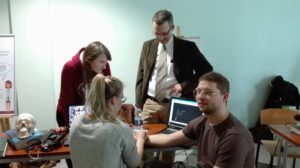
In case of any questions, please contact us: k.cienszkowska@gmail.com
Gynecology – Clinical breast examination – breast cancer prevention
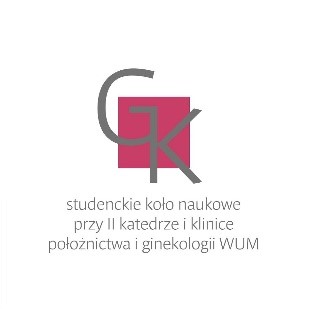
Organiser: Students’ Scientific Group by the II Department of Obstetrics and Gynaecology Medical University of Warsaw
Form: Theoretical and practical
Description: Since the breast cancer is still the main cause of women’s mortality and early detection is proven to be associated with reduction of both breast cancer morbidity and mortality doctor of any specialty should be able to perform a breast exam, so the education in this field is crucial as the aim for the early detection of possible malignant lesions.
After the medical interview and providing comfort for the patient, the next step during breast examination is checking for any changes in the breasts, i.e. changes in breast size and symmetry, breasts’ skin abnormality such as dimpling, peau d’orange, alveolar infection etc. After putting patient in an examination position an exam continues with a palpation of both breasts. Several different palpation techniques can be used during breast examination – our workshops will present all of them to our participants. If any lumps are present, we should be able to determine its size, consistency, surface and mobility. During palpation, we also check for any discharge from the alveoli, by gently pressing sides of it with our fingers. The last step is the examination of the lymph nodes in case of lymphadenopathy in the supra- and infraclavicular areas and axillary area.
The aim of our workshop is to teach the participants the proper techniques of performing the clinical breast examination and practice it on the manikins. We would also like to put an emphasis on how to provide the comfort for the patient and what should draw our attention during the medical interview.
Workshops will be divided into three parts
- Presentation about the breast examination and its clinical significance.
- Presenting the proper breast examination techniques on the manikins
- Performing the breast examination on the manikins by the participants.
In case of any questions, please contact us: hsymonides@gmail.com
Gynecology – How to perform the Papanicoulau test – cervical cancer prevention
 Organiser: Students’ Scientific Group by the II Department of Obstetrics and Gynaecology Medical University of Warsaw
Organiser: Students’ Scientific Group by the II Department of Obstetrics and Gynaecology Medical University of Warsaw
Form: Theoretical and practical
Description: The Papanicoulau test (abbreviation – Pap test) is a method of cervical screening used to detect potentially pre-cancerous and cancerous processes in the cervix. Abnormal findings are often followed up by more sensitive diagnostic procedures and, if needed, interventions that aim to prevent further cancerous progression. Pap-testing is recommended every 3 years for patients aged 21-65.
The test is performed by using the speculum to open the vaginal canal for the full visualisation of the cervix, including the squamous epithelium of the ectocervix, squamocolumnar junction, and the external os. Since HPV has a predilection for the transformation region, Pap test focuses on sampling the cells at the transformation zone for the adequate detection of dysplastic cells. To obtain the specimen, a cervical broom or cervical spatula is applied to the surface and the canal of the cervix and turned in a single direction to achieve an adequate sample for cytology. After that, the specimen is placed on the glass slide and immediately fixated to avoid air-drying and then analysed under a microscope.
The aim of the workshop is to familiarises participants with the indications for the Papanicoulau test as well as the correct technique of performing it, as it is the best screening method for premalignant and malignant lesions of the cervix.
Workshops will be divided into three parts:
- Presentation about what the Pap test is, why and when should it be performed.
- Presenting the correct technique of performing the Pap test on the manikins, including the correct way of fixating the specimen for further analysis.
- Performing the Pap test on the manikins by the participants.
In case of any questions, please contact us: hsymonides@gmail.com
Gynecology – Detecting the cancer – basis of the gynaecological examination
 Organiser: Students’ Scientific Group by the II Department of Obstetrics and Gynaecology Medical University of Warsaw
Organiser: Students’ Scientific Group by the II Department of Obstetrics and Gynaecology Medical University of Warsaw
Form: Theoretical and practical
Description: The pelvic examination typically consists of visual external inspection, insertion of the speculum, performance of any tests or cytology, and then bimanual examination to determine the size and character of the uterus and ovaries
Vulvar examination includes basic developmental assessment, symmetry, skin abnormalities, tumours, discharge, presence of Bartholin cyst etc.
Vaginal examination begins with gently separating labia minora to visualize the hymenal ring, to check the presence of cystocele, urethrocele etc. Inspecting the urethral opening is also the part of the examination. After examining the externals of the vagina, the speculum is inserted, allowing to visualise the vaginal walls and the cervix, and inspecting them for any pathologies. After that, the examiner usually performs the Pap test, which is the subject of another workshops.
Bimanual examination is one of the most important elements of gynaecological examination. Its purpose is to determine the size of the uterus, presence (or absence) of adnexal masses and detecting any pathological symptoms.
During the exam, typically the index and middle finger are inserted into the vagina, while the opposite hand is placed on the abdomen, and its fingers are used for palpation. Firstly, the abdomen is palpated in search of any abnormal masses, secondly the cervix. Uterine palpation is the third step of the bimanual examination. The fourth and last step is examining each of the lower quadrants of the abdomen, by moving the abdominal hand to them, and the pelvic hand to each corresponding side – that allows palpating the adnexal regions, thus the ovaries.
The aim of this workshop is presenting every step of the gynaecological examination to the participants, allowing them to practice on the manikins. We also want to put a stress on what symptoms should alarm us during the examination, since that may lead to early detection of malignant and premalignant lesions, infections or anatomical abnormalities.
The workshop will be divided into three parts:
- Presentation containing basic information about gynaecological examination.
- Presenting the correct technique of performing gynaecological examination on the manikins.
- Performing the gynaecological examination on the manikins by the participants.
In case of any questions, please contact us: hsymonides@gmail.com
Medicine for your skin – creams and ointments
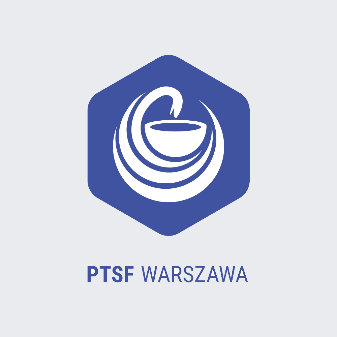 Organiser: Polish Pharmaceutical Students’ Association Warsaw
Organiser: Polish Pharmaceutical Students’ Association Warsaw
Form: Practical
Description: Creams and ointments are types of semi-solid dosage forms. They are applied on a variety of body surfaces and used in many cases in medicine and cosmetology. Our workshop is a special opportunity for participants to explore this subject.
The workshop will be divided in two parts.
First part will be a theoretical introduction. The introduction will include basic information about structure and composition of semi-solid dosage forms, indications and technology of production in local pharmacies
In the second part participants will get a chance to make personally their own cream/ointment!
In case of any questions, please contact us: president.warsaw@ptsf.pl
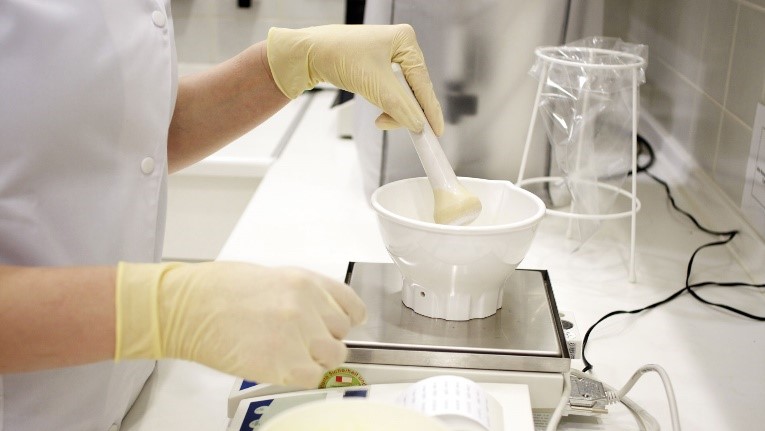
Towards novel chimeric compounds in pain therapy
Organiser: SKN WISTAR przy Zakładzie Farmakodynamiki i Patofizjologii
Form: Practical and theoretical
Description: For years, polytherapy as well as polypragmasy have been an inseparable part of many patients’ lives, mainly the elderly, suffering from several conditions at the same time. Both terms are closely related to the use of an excessive number of drugs, sometimes without a clear need. Hence, this incorrect prescription of medicinal substances may, in consequence, lead to the emergence of various types of interactions, e.g. drug-drug. The nature of these interactions may be both pharmacodynamics as well as pharmacokinetics. This, in turn, may result in increased toxicity of a given drug.
Although information that correctly applied polytherapy brings mainly benefits can easily be found in the literature, in fact, obtaining satisfactory results without harming the patient’s health is extremely difficult to achieve.
In order to minimize side effects resulting from the use of several drugs at the same time, but also taking into account the risk of prescribing incorrect medicinal substances by many doctors, several potential solutions have been introduced up to now.
Such a new solution may occur effective in pain treatment, in case of which morphine is still considered the “golden standard”, though a long-term use of opioids is associated with the risk of clinically significant adverse reactions such as vomiting, drowsiness, constipation or depression of the respiratory center.
Herein, we would like to describe some benefits associated with hybrid compounds as well as present several behavioral techniques that are used in order to evaluate their antinociceptive potential in animals.
In case of any questions, please contact us: hazufiel@wp.pl
TRE® Workshop
Organiser: “Polish Association of TRE®”
Form: Practical and theoretical
Description: What is TRE®?
TRE® – Tension & Trauma Release Exercises – is a simple yet innovative series of exercises that assist the body in releasing deep muscular patterns of stress, tension and trauma. Created by Dr. David Berceli, PhD, TRE® safely activates a natural reflex mechanism of shaking or vibrating that releases muscular tension, calming down the nervous system. When this muscular shaking/vibrating mechanism is activated in a safe and controlled environment, the body is encouraged to return back to a state of balance.
Reported Benefits Include:
• Less Worry & Anxiety
• Reduces Symptoms of PTSD
• More Energy & Endurance
• Improved Marital Relationships
• Less Workplace Stress
• Better Sleep
• Less Relationship Conflict
• Reduced Muscle & Back Pain
• Increased Flexibility
• Greater Emotional Resiliency
• Decreases Symptoms of Vicarious Trauma
• Healing of Old Injuries
• Lessened Anxiety surrounding Serious Illness
• Relief from Chronic Medical Conditions
Neonatal emergency
Organiser: Neonatology and Neonatal Intensive Care Students’ Interest Group, Department of Neonatology and Neonatal Intensive Care, Medical University of Warsaw
Form: Practical simulation workshop with short theoretical introduction
Description: In this short, but intense workshop session you will have a chance to learn how to manage your smallest patient – a newborn! Starting with a brief primer on the topic, we will guide you through the vital skills for any doctor with regards to neonates (airway management, chest compressions & ventilation, intravenous access). Having acquired those skills, you will have a chance to put them into practice in as many as four different simulated scenarios, where we will lead, assess and debrief your actions as a team caring for a neonate. Come join us for an incredible hands-on training that will be useful for any future neonatologist, pediatrician, or really any future doctor that will be caring for our smallest patients.
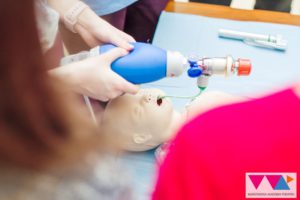
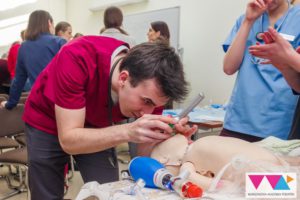
In case of any questions, please contact us: asia.szczepanska93@gmail.com
Neurovascular Workshop
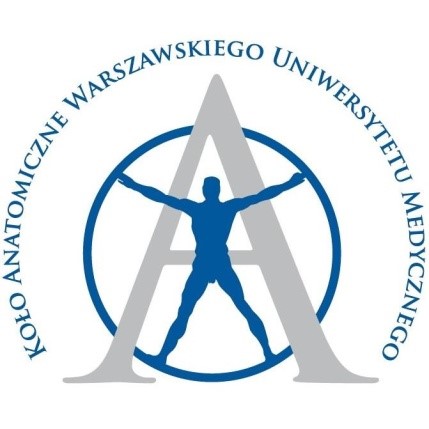 Organiser: Students’ Scientific Group „Anatomy”, Department of Descriptive and Clinical Anatomy, Center of Biostructure Research
Organiser: Students’ Scientific Group „Anatomy”, Department of Descriptive and Clinical Anatomy, Center of Biostructure Research
Form: Practical
Description: The cerebral arterial circle described by Thomas Willis in 17th century is a vital structure on the base of the cerebrum, that presents great clinical importance in sustaining cerebral blood flow. Great amount of anatomical variations of the circle combined with unfortunate tendency of circles arteries to form aneurysms or congenital anomalies such as fenestrations, makes neurovascular interventions in its region very demanding. This is why, knowledge of these variations in neuroradiology, neurosurgery and interventional radiology is crucial.
During the workshop we give you possibility to observe common and rare anatomical variations of cerebral arteries, its aneurysms and fenestrations with help of intraoperative microscope and microsurgical tools. The second part of the workshop will give you unique chance to try your own skills in microsurgical dissection of cerebral arteries in conditions similar to that found in the operating theatre.
In case of any questions, please contact us: arkadiusz.kowalczyk@student.wum.edu.pl
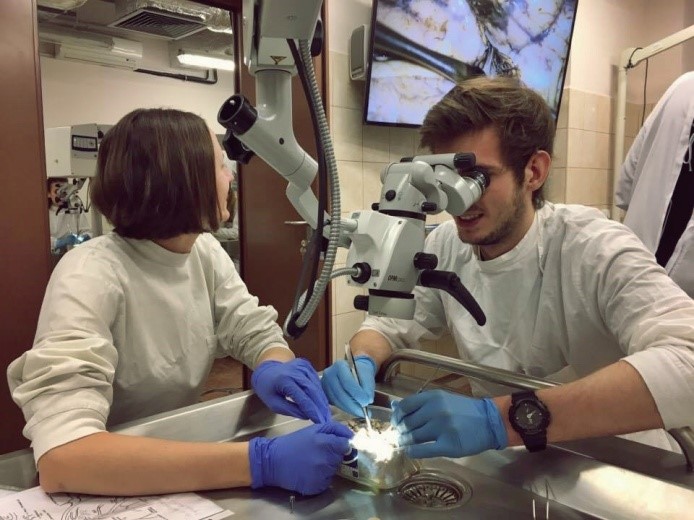
Dermatosurgery
Organiser: Students’ Scientific Group by the Department and Clinic of Dermatology
Form: Theoretical and practical parts
Description: Dermatosurgery has been defined as the practice of dermatology that specializes in surgical
procedures and minimally invasive treatments to improve health, function and appearance
of skin. Dermatosurgeries are performed under local anesthesia.
The course covers a theoretical review of the basic principles of skin surgery and practical
workshops using pig skin so you will have the opportunity to practice simple excision and
closure techniques.
Expected learning outcomes:
– The review the instruments used in dermatology surgery
– To explain the effects, potential adverse effects and limitations of local anesthesia
– To learn the curettage technique to remove skin lesion
– To learn how to perform the skin biopsy
– To review the most common suturing techniques for wound closures
– To understand the underlying geometrical principles of simple excision
The workshop is a great learning opportunity for everyone who is interested in skin surgical
techniques, not only for the future dermatologists!
In case of any questions, please contact us: ankaklicka@gmail.com
Tolerance, stigmatisation, hate speech.
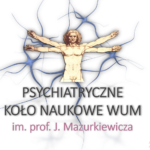 Organiser: Student Psychiatry Club MUW of prof. Jan Mazurkiewicz
Organiser: Student Psychiatry Club MUW of prof. Jan Mazurkiewicz
Form: Theoretical
Description: We live in times when much is said about a great value of acceptance and tolerance. But do we really transfer it to our everyday life sufficiently? The hate speech is ever-growing in the mouths of public figures and on social media. The victims are struggling with problems on psychological grounds, have difficulties with socializing. It only leads to isolation and more despair. As a Student Psychiatry Club, we cannot and will not pass by the phenomenon indifferently. Do tolerance and acceptance mean that we must agree with everyone around us? Could being tolerant be fashionable? What does it mean to accept yourself as well as others? Is stigma around psychiatric disorders still in place? How to use inclusive language? We will find out the answers to these questions and more during our workshops. We invite you to join us. It will be a great opportunity to find out more about importance of being kind and open to others, even if they are nothing like us. After all, these skills could come in handy sometime in your professional lives, dealing with variety of patients. See you on Sunday!
In case of any questions, please contact us: marcin.kuna94@gmail.com
Management of postpartum haemorrhage- uterine compression sutures
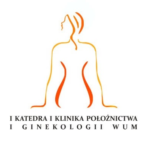 Organiser: Students’ Research Group at the 1st Department of Obstetrics and Gynecology, Medical Univerisity of Warsaw
Organiser: Students’ Research Group at the 1st Department of Obstetrics and Gynecology, Medical Univerisity of Warsaw
Form: Theoretical and practical
Description: Postpartum haemorrhage (PPH) is the most common form of major obstetric haemorrhage and remains one of the leading causes of maternal morbidity and mortality worldwide, which is why it is so important to know the guidelines regarding prevention and management of it.
During the theoretical part of the workshop, participants will have a chance to revise their knowledge regarding signs and symptoms, common causes and epidemiology of postpartum haemorrhages and review guidelines developed by American College of Obstetricians and Gynecologists, World Health Organisation, Royal College of Obstetricians and Gynecologists and Polish Society of Gynecologists and Obstetricians, regarding PPH
Practical part will focus on uterine compression sutures- all the participants will have a chance to try the most commonly used ones (B-Lynch, Hayman, Pereira, Matsubara- Yano, Cho) on models of uteruses.
Workshops will be divided into three parts
- Presentation about PPH and guidelines regarding it’s prevention and management
- Presenting the different types of uterine compression sutures on the models
- Suturing the models by participants
In case of any questions, please contact us: sknstarynkiewicza@gmail.com
How to keep a patient’s airway open?
Organiser: Students’ Scientific Group by the Department of Emergency Medicine
Form: Practical
Description: Do you know how to place a plastic tube into someone’s throat and secure airways? Or maybe you tried it several times, but without success? Don’t worry! Our workshop will start with several minutes of theoretical preparation about methods of maintaining patent airway. After that we will begin training in intubation, inserting LMA and others.
In case of any questions, please contact us: skn.medycyna.ratunkowa.wum@gmail.com
